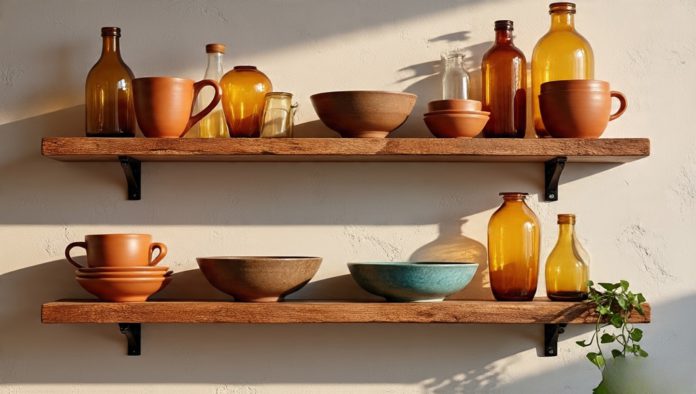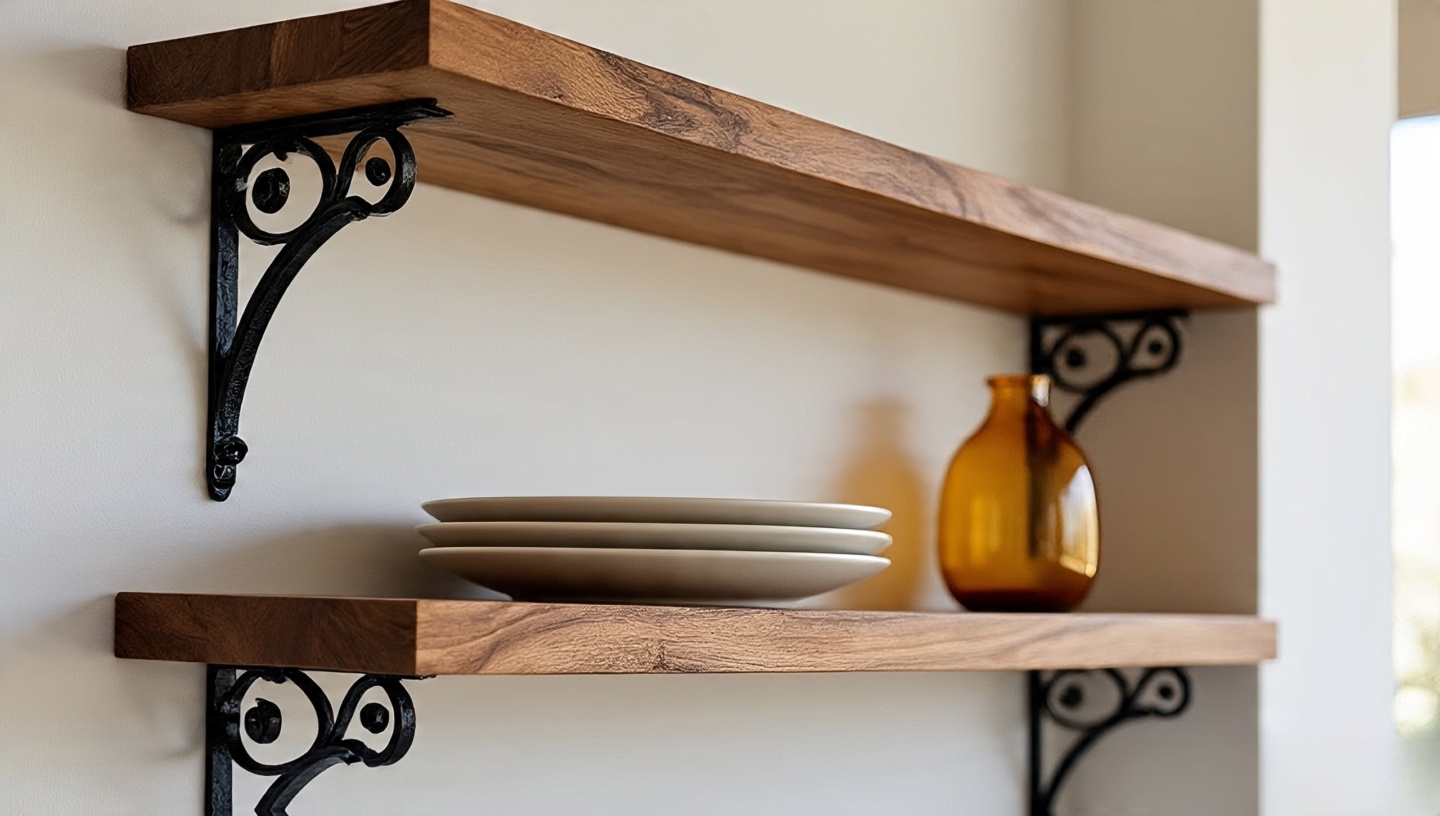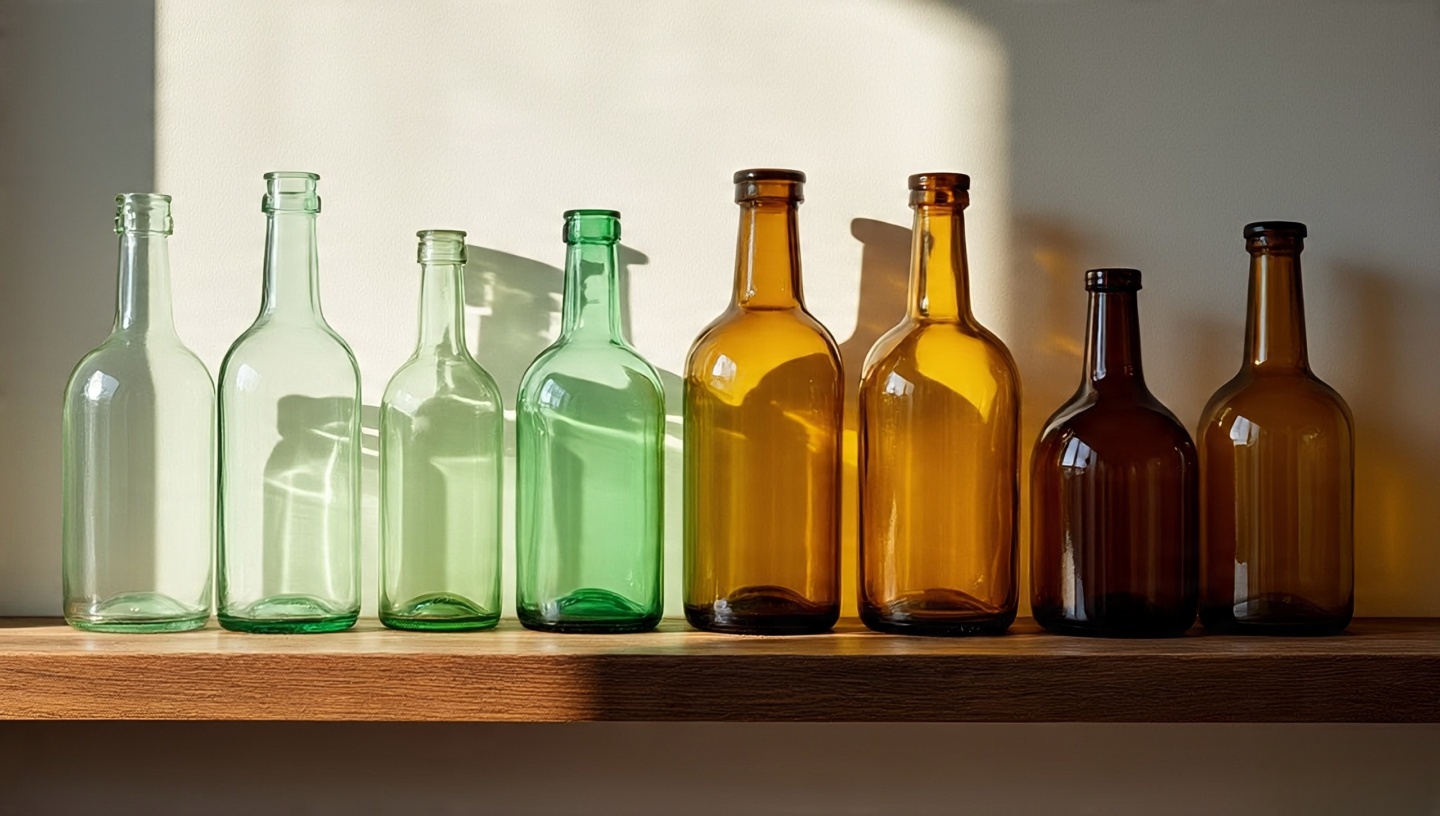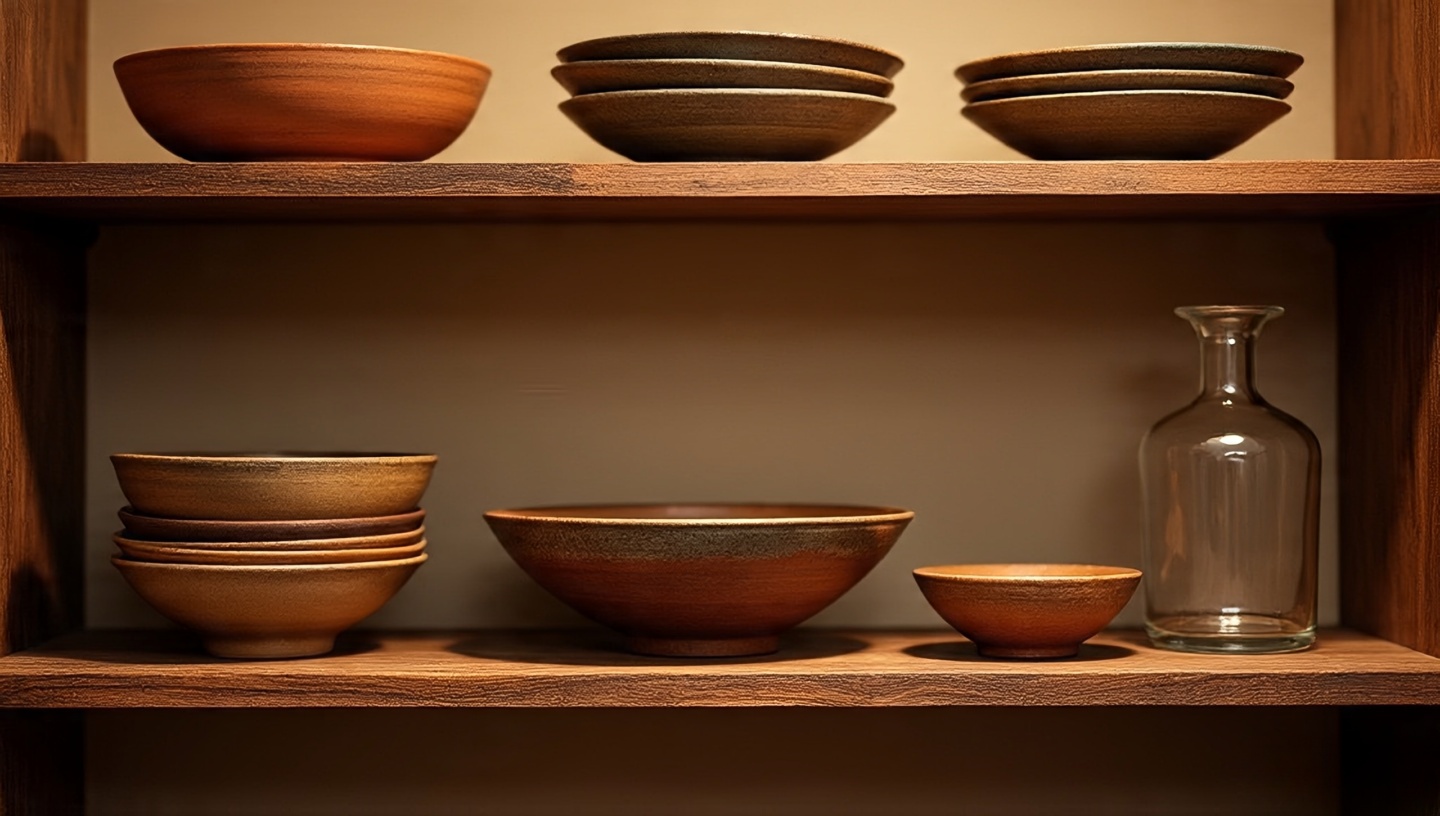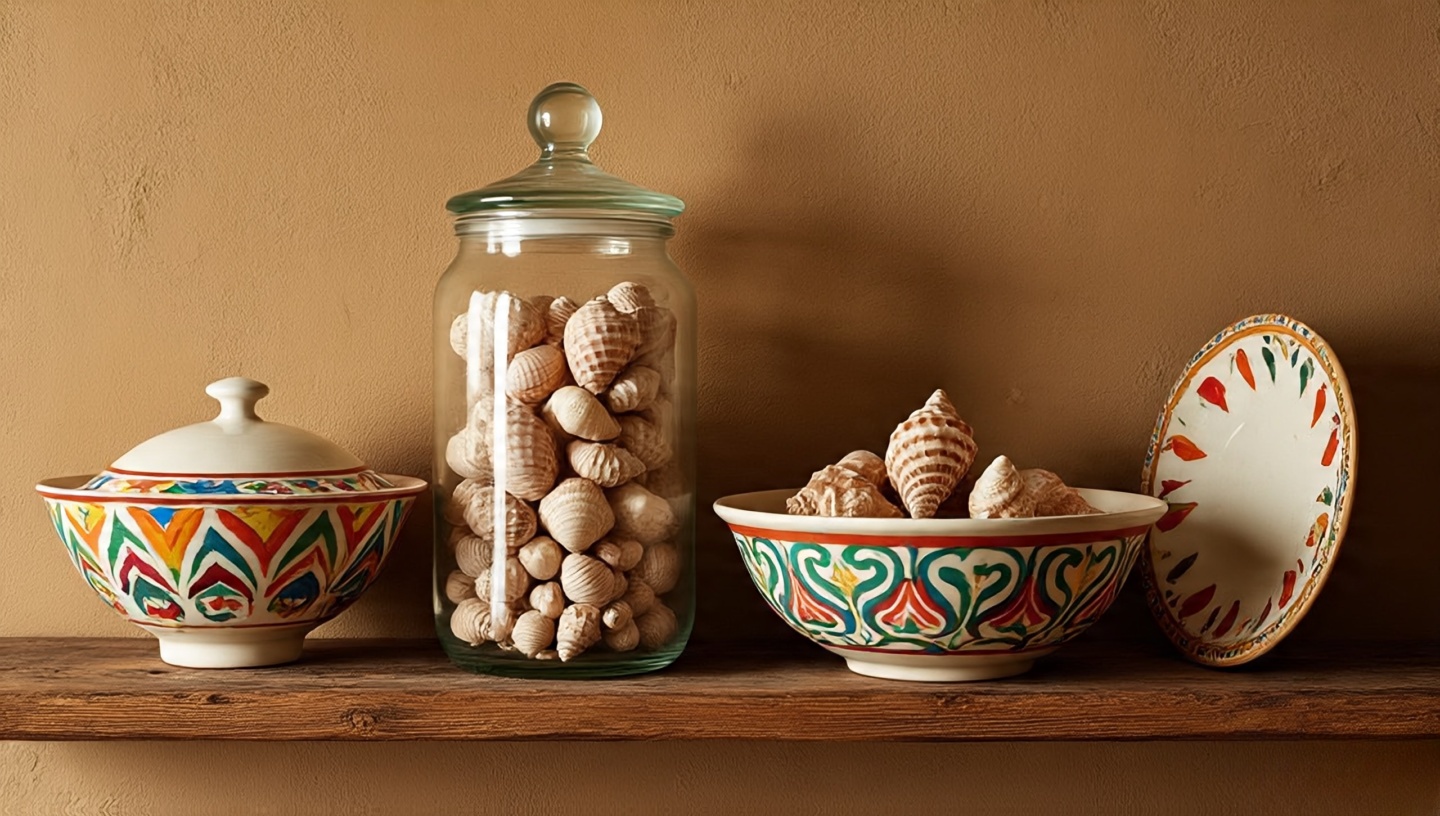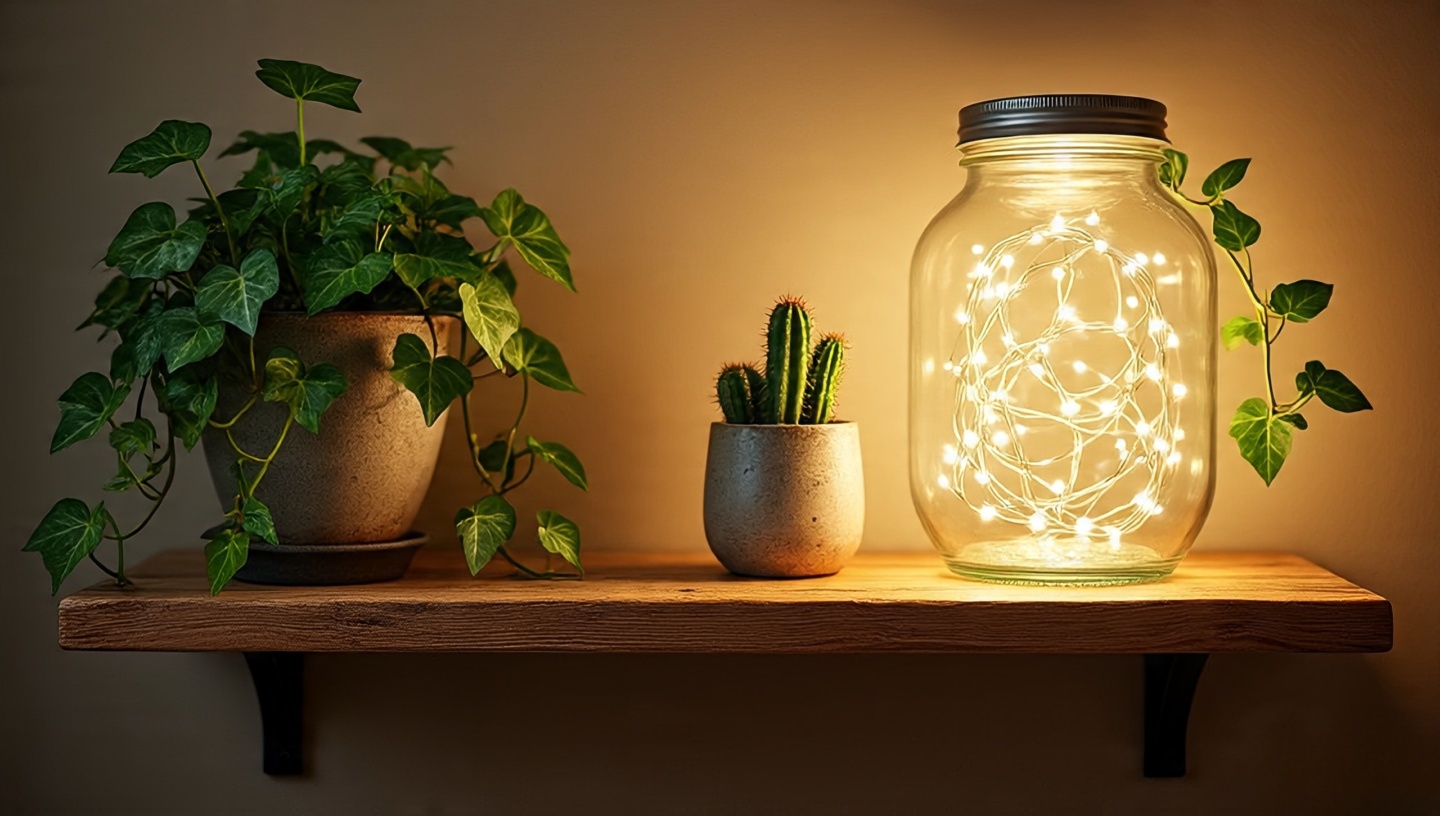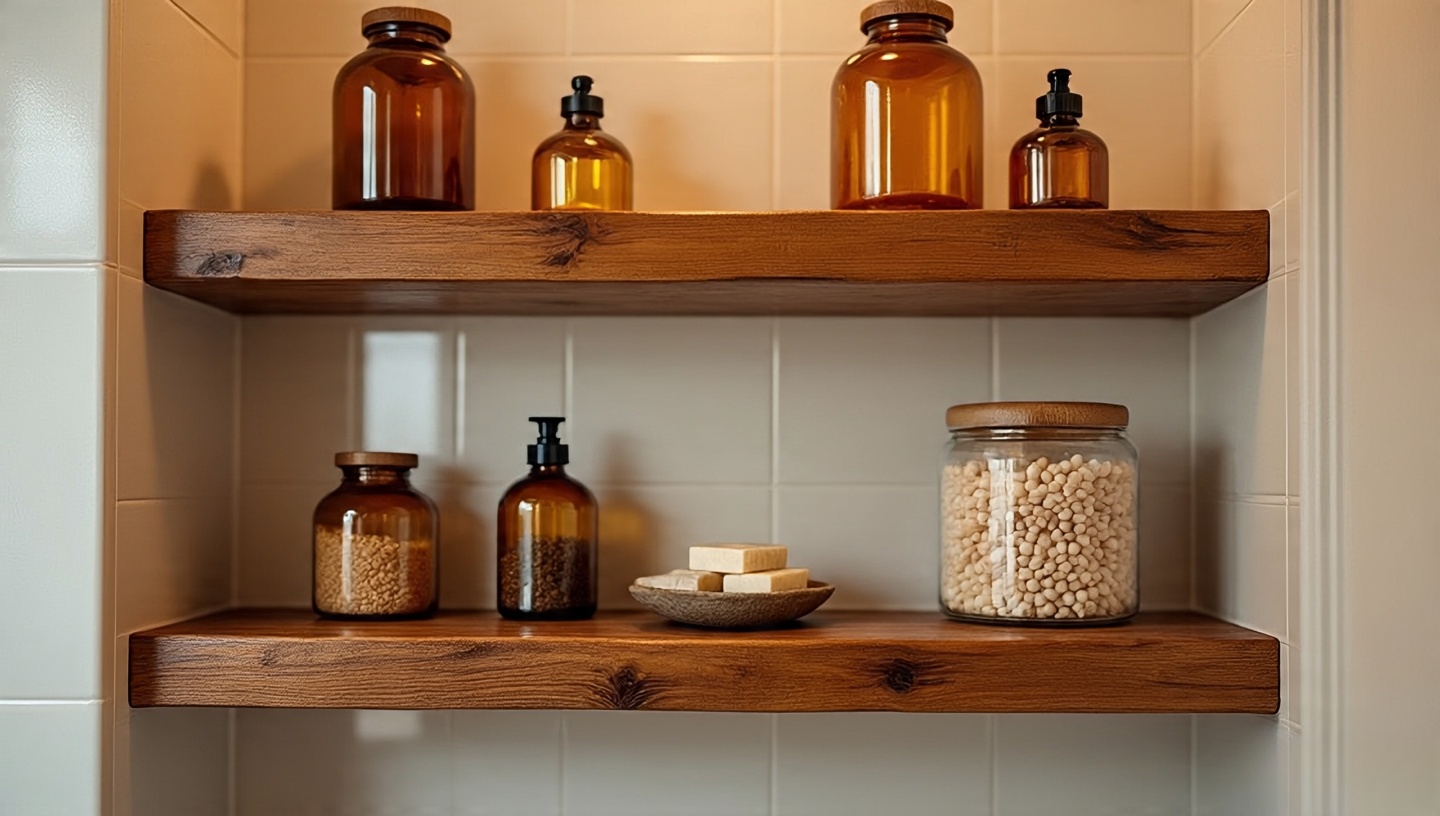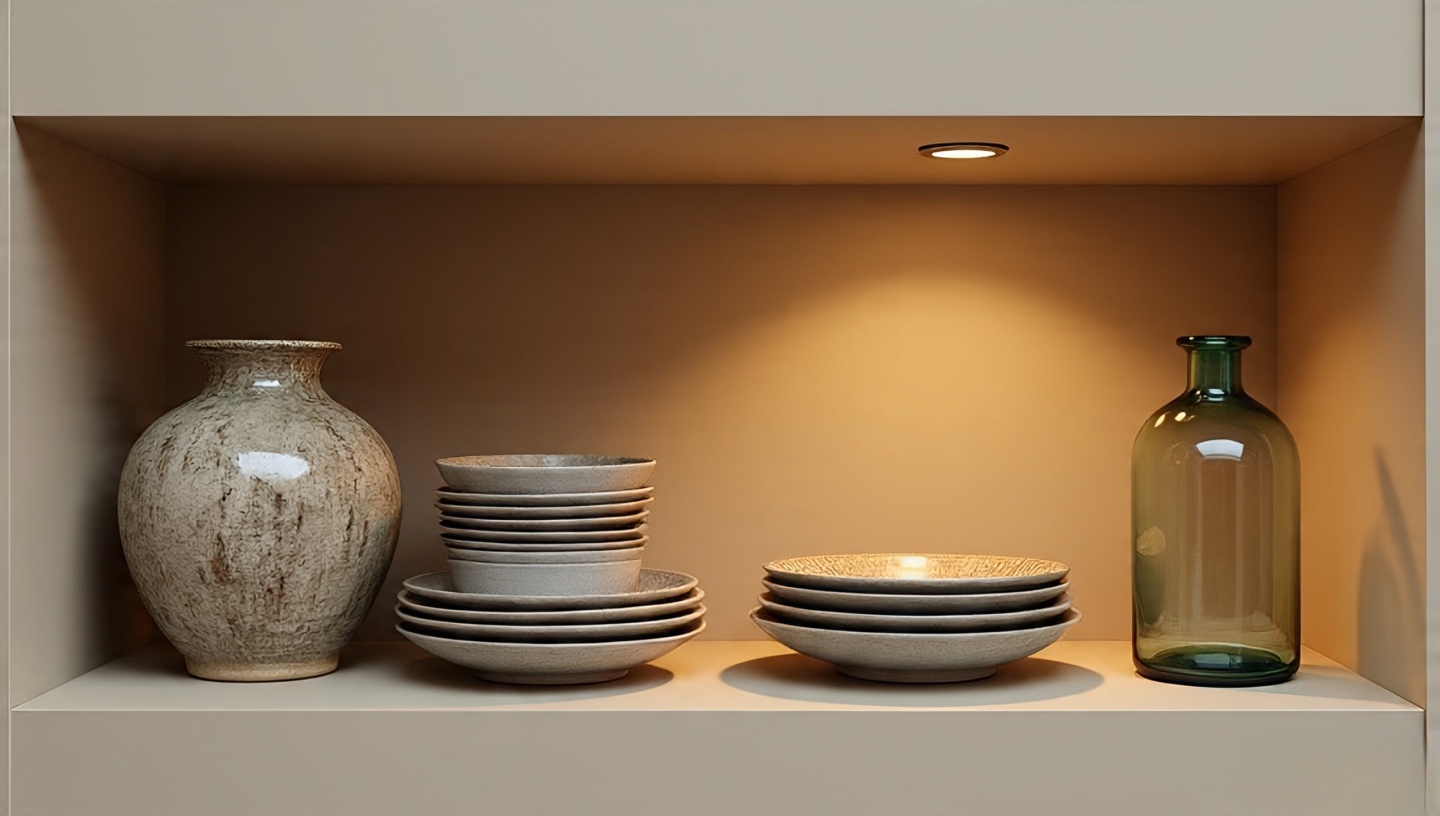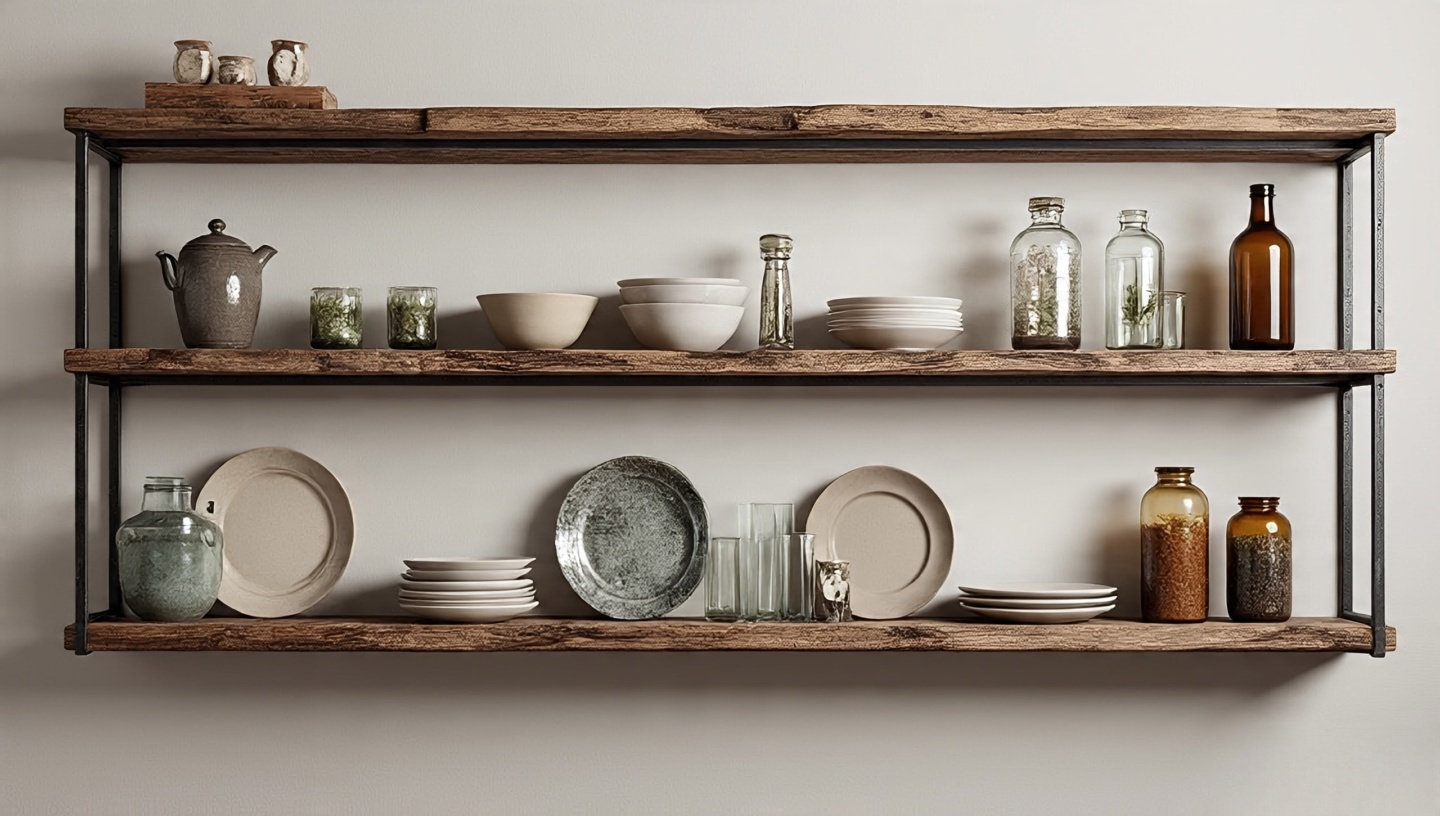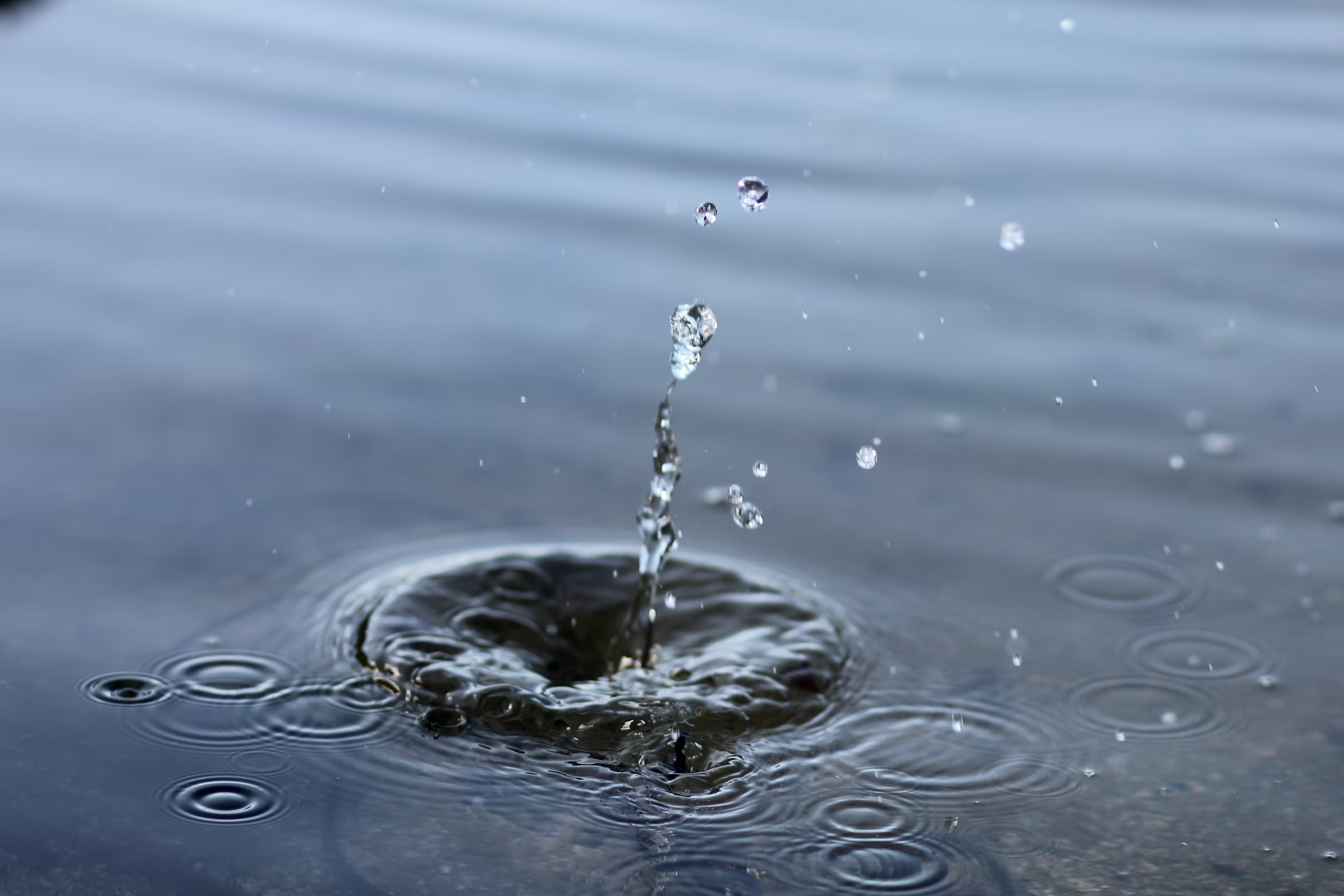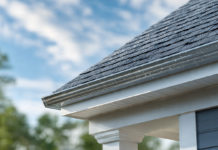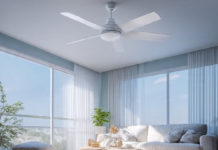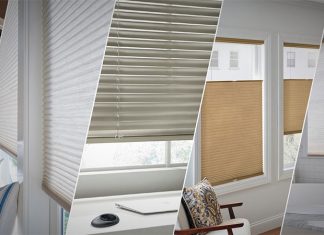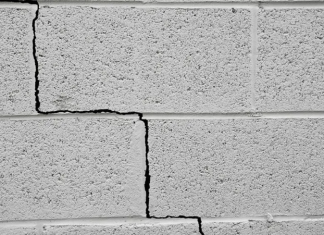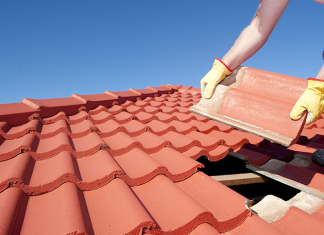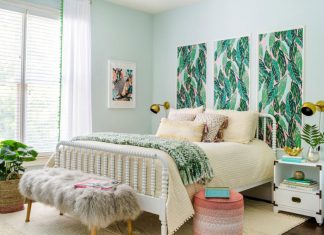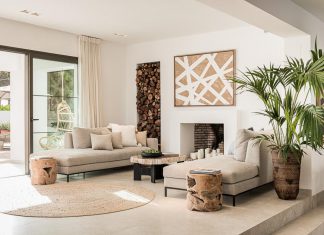Roohome.com – There’s something quietly rebellious about leaving your shelves open. No cupboard doors to hide behind, no quick fixes of tossing clutter out of sight. It’s an invitation to display the things that matter whether that’s hand-thrown ceramics, flea market jugs, or glassware that glows like jewels in the sun. Done right, Bohemian shelving becomes more than storage. It transforms into a stage for your personality.
I’ve designed homes where cabinets were lined up like soldiers, precise and uniform. They worked, but they rarely made anyone smile. Then there are the Boho kitchens and living rooms I’ve helped clients build spaces where shelves carried mismatched cups, vintage bottles, and treasures from travel. These places always felt alive. That’s the spirit we’ll dive into here.
So if you’re curious about turning open shelving into an authentic Boho feature, here’s my full guide equal parts design theory, practical advice, and stories from years of experimenting in my own and clients’ homes.
1. Why open shelving feels so Boho
Bohemian interiors thrive on honesty and imperfection. They don’t chase glossy perfection or rigid symmetry. Open shelving fits naturally into this approach it’s vulnerable, visible, and full of story. When your mugs, bowls, and glass bottles are out in the open, they reveal a life being lived.
Designer’s Note: In over 30 years, I’ve noticed clients smile more when shelves carry items they actually touch daily morning coffee mugs, the chipped bowl from their grandmother rather than sterile décor pieces bought in a set.
Many Boho kitchens use rustic wood planks instead of cabinets, creating warmth and ease. And unlike closed cabinetry, open shelving invites you to curate slowly, piece by piece, season by season.
The freedom of imperfection
I once ripped out upper cabinets in a narrow apartment kitchen. Friends told me it would look messy. Instead, sunlight poured through the window, bouncing off glass tumblers. The chipped blue ceramic bowl I’d hidden for years became a centerpiece. Imperfection, suddenly, was charm.
2. Choosing shelves: materials and placement
Your shelves themselves set the tone. For Boho style, natural and tactile materials always feel right. Floating planks of oak or pine bring warmth. Reclaimed beams carry history in their grain. Painted MDF can work, but it often feels too flat unless distressed.
Height & Spacing
- Eye level: Place the first shelf roughly 18–22 inches above a counter. This avoids cramping while keeping it accessible.
- Vertical rhythm: Leave 15–18 inches between shelves to accommodate taller ceramics or bottles. Too tight, and items feel forced.
- Depth: Kitchens work best with 10–12 inch deep shelves. Living rooms can stretch to 14 inches for vases and books.
Support details
Hidden brackets create a floating illusion clean and modern. But Boho often embraces honesty, so iron brackets, brass corbels, or even leather straps can become part of the design story.
3. Layering ceramics: shape, soul, and storytelling
Ceramics are the grounding anchors of Boho shelving. They carry earth, weight, and human touch. Unlike machine-made pieces, handmade ceramics have irregular rims, slight glaze drips, or textures that reveal the maker’s hand.
Colors that whisper
Start with earthy neutrals terracotta, sandy beige, off-white. Then punctuate with a surprise pop: a turquoise mug from Mexico, a mustard-yellow bowl recalling late-summer sunlight. This selective vibrancy makes the eye linger without overwhelming.
Anecdote: flea market rescue
I once bought a cracked ceramic jug with faded florals for a few dollars. The seller apologized for the flaw. To me, that crack was character. Filled with eucalyptus on a shelf, it became the most admired piece in the room.
Common mistake
Problem: Too many glossy ceramics look heavy and repetitive.
Fix: Mix matte and glossy, wide bowls with slender vases. Let contrast create rhythm.
4. Glass: reflections and atmosphere
If ceramics ground, glass lifts. Transparent bottles, jars, and tumblers bring movement as light changes through the day. Grouped by gradient clear, pale green, smoky amber they create a subtle rainbow without paint.
Practical note: maintenance
Open shelves mean fingerprints and dust. I advise clients to store a microfiber cloth inside a tall vase. Quick wipe, instant clarity. It’s part of the ritual, like tending plants.
Common mistake
Problem: Displaying only clear glass makes shelves feel sterile.
Fix: Mix in tinted glass, or pair with ceramics for balance.
5. Mixing the two: balance and depth
The true Boho magic happens when ceramics and glass live together. Contrast is key: earthenware next to crystal, opaque beside transparent. It’s visual conversation.
Layer depth, not just width
Push a tall glass decanter slightly behind a stack of bowls. Let a squat ceramic dish sit in front of a slender vase. This layering builds depth like a stage set foreground, midground, background.
Designer’s Note
In galleries, curators always stagger pieces in depth, not just line them flat. Apply the same principle at home. Your shelves become micro-exhibitions.
6. Adding personality: objects as stories
Bohemian style is less about matching sets and more about meaningful mismatches. A grandmother’s teacup beside a modern artisan plate. A jar of seashells from a childhood trip next to a bold patterned bowl. These combinations spark conversation and authenticity.
- Use jars for collections (pebbles, spices, old coins).
- Lean one plate against the wall as a backdrop.
- Don’t fear asymmetry life rarely matches.
7. Shelving as atmosphere: light, greenery, and beyond
Shelves aren’t islands; they’re part of a room’s ecosystem. Place them where natural light can sweep across. Add trailing ivy or a small cactus for life. At night, a lamp nearby turns glass into glowing lanterns.
Small tip: fairy lights in jars
A string of fairy lights slipped inside a clear jar becomes instant magic. Not practical for storage, but perfect for evening atmosphere.
Common mistake
Problem: Relying only on overhead lights.
Fix: Add a sconce, lamp, or candlelight near shelves. Boho thrives on layered lighting.
8. Beyond the kitchen: whole-home Boho shelves
Though most people picture kitchens, open shelving works everywhere:
- Living room: Shelves with books, candlesticks, and pottery.
- Bathroom: Apothecary jars with bath salts, rustic dishes for soaps.
- Entryway: A small shelf with a catch-all ceramic bowl and glass vase.
I once styled a bathroom with amber glass bottles and a clay dish. The homeowner said it felt like stepping into a boutique spa each morning. That’s the power of atmosphere through small details.
9. Common mistakes and simple fixes
Overcrowding
Problem: Stuffing shelves with every object.
Fix: Rotate seasonally. Keep 30% breathing space.
Too much symmetry
Problem: Perfectly balanced shelves feel stiff.
Fix: Offset heights, let randomness create charm.
Ignoring function
Problem: Everyday items placed out of reach.
Fix: Place daily mugs and glasses within arm’s reach, decorative items higher.
10. Decision matrix: planning your shelves
Here’s a simple framework I often share with clients:
| Factor | Option | Best For |
|---|---|---|
| Material | Reclaimed wood | Rustic, history, warmth |
| Walnut/oak | Elegant, timeless, works in mixed styles | |
| Metal/glass | Industrial-Boho blend | |
| Depth | 10–12 in | Kitchens, mugs, plates |
| 12–14 in | Living rooms, books, vases | |
| Lighting | Natural + lamp | Warmth, layered moods |
Mini FAQ: Quick answers
Do open shelves collect too much dust?
A little, yes. But with a quick wipe every week, the trade-off in warmth and character is worth it.
What if my kitchen is small?
Even one shelf can create impact. Place it above the sink or stove to hold items you use daily.
Can I mix Boho shelves with modern cabinets?
Absolutely. Contrast makes both stronger. Floating oak shelves above sleek cabinets often look stunning.
Closing: a checklist for your first Boho shelf
-
- Pick natural shelf material (wood, reclaimed beam).
- Allow 15–18 inches between shelves for varied heights.
- Mix ceramics (earthy) and glass (light) for balance.
- Leave 30% breathing room curation beats clutter.
- Layer lighting sun, lamp, or candle.
- Add one personal piece that tells a story.
You don’t have to overhaul your home. Try one shelf first. Place a ceramic jug, a glass bottle, and a trailing plant. Notice how the room feels different. That’s the essence of Boho: living with what you love, not hiding it.
